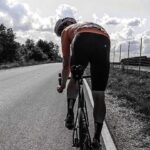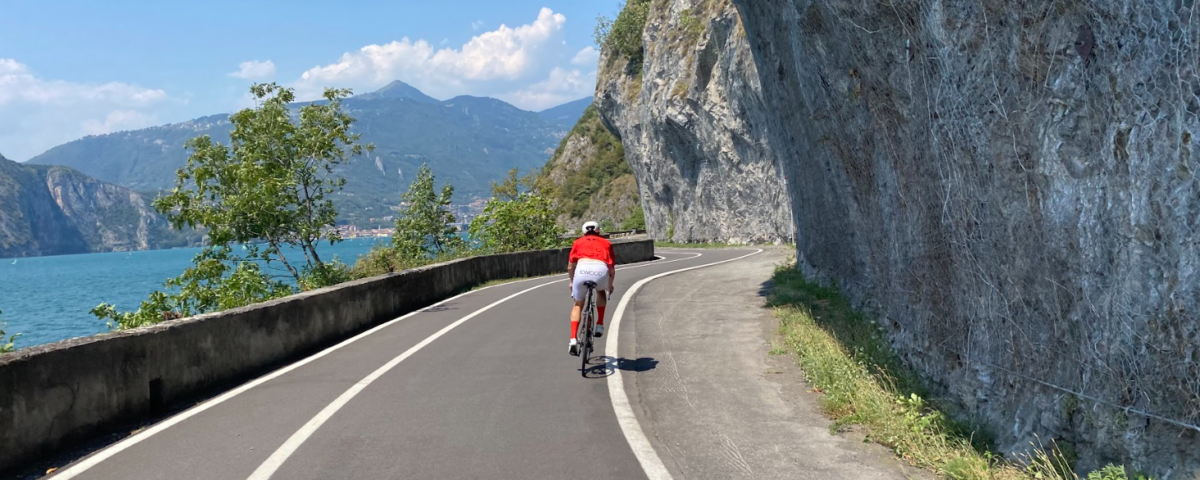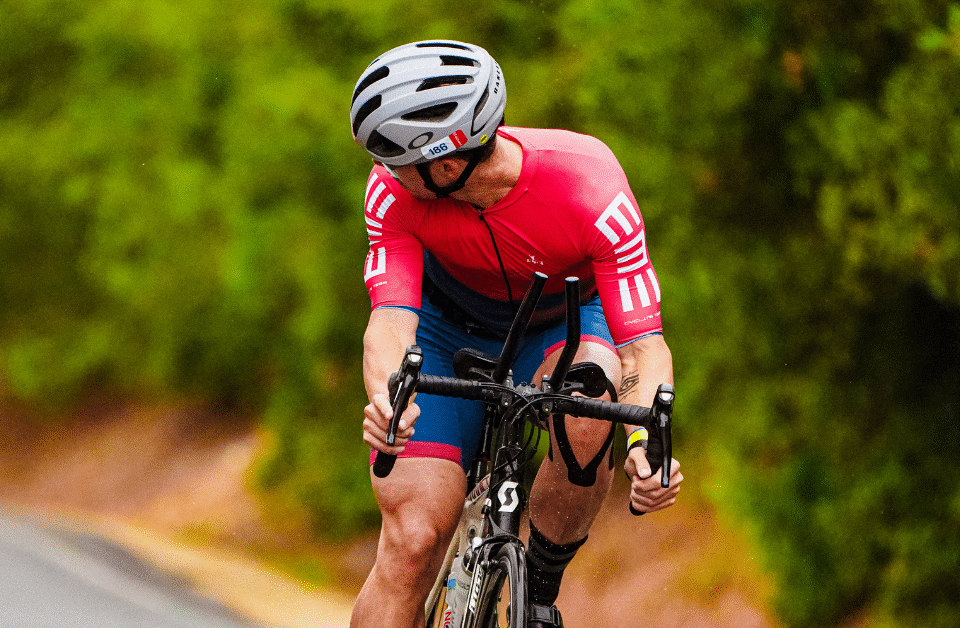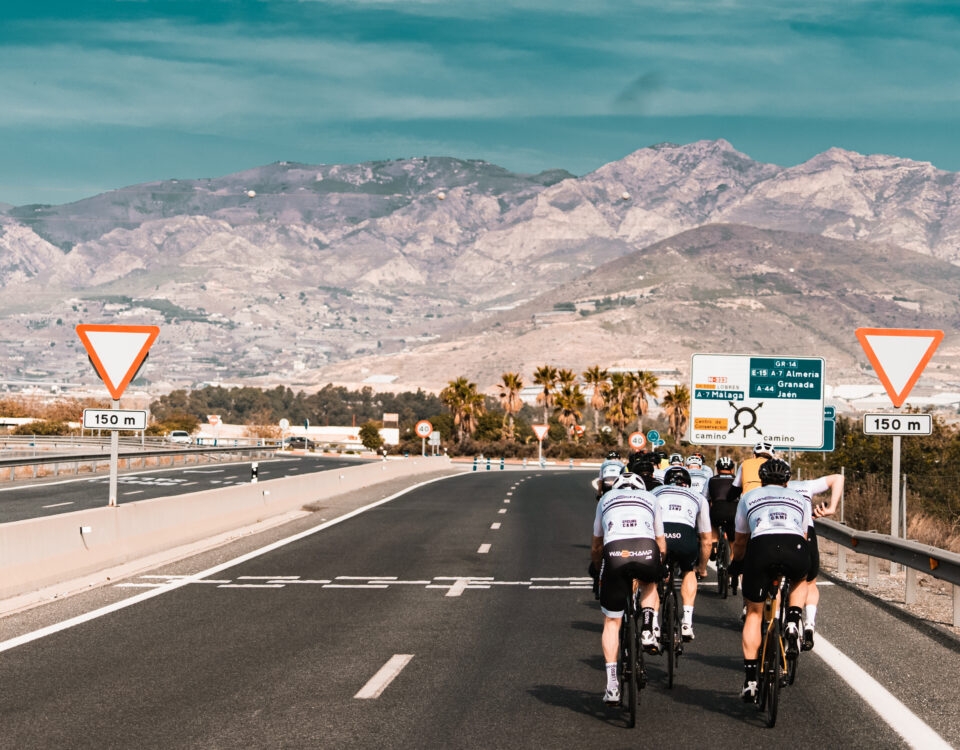
Strength training for cyclists – a modern approach to building power
24 December 2024
The Best Training Models – how to choose the ideal plan for your goals?
7 February 2025
Amid the strenuous effort of cycling, it’s sometimes impossible to spare a moment for focused intellectual reflection. But no worries—this post will explain everything you need to know about training zones in cycling!
What will you find in this article?
- Introduction to training zones
- Physiological foundations
- Coggan’s training zones system
- Practical training aspects
- Common mistakes in american amateur cycling
- Sample workouts
- Terrain-specific training
- Data analysis and technology
- Advanced concepts
- Comprehensive summary
Introduction to training zones
As a World Tour coach who has worked with both UCI ProTeams and amateur racers across the United States, from Colorado’s high-altitude training camps to sea-level criteriums in Florida, I understand the importance of adapting training zones to various conditions and goals.
Physiological foundations
Training in appropriate intensity zones triggers specific adaptations in the body:
- Mitochondrial density increase
- Metabolic efficiency improvement
- Cardiovascular development
- Neuromuscular power enhancement
The key is understanding that different intensities stimulate different energy systems, leading to specific adaptations crucial for events ranging from criteriums to gran fondos.
Coggan’s training zones system
Zone 1 – Active Recovery (<55% FTP)
Characteristics:
– Power: <55% FTP
– Heart Rate: <68% HRmax
– RPE: 1-2/10
– Conversation: Easy talking
Application:
– Recovery after intense workouts
– Warm-up and cool-down
– Active rest days
– Post-race recovery
– High-altitude acclimatization
Real-world example: easy spin on the Minuteman Bikeway (Boston) or Recovery ride along San Diego’s coastline.
Zone 2 – Endurance (56-75% FTP)
Characteristics:
– Power: 56-75% FTP
– Heart Rate: 69-83% HRmax
– RPE: 2-3/10
– Conversation: Comfortable
Application:
– Long base rides
– Building endurance
– Recovery rides
– Foundation for gran fondos
– Altitude adaptation rides
Example workout: 3-hour endurance ride in the rolling hills of Northern California or steady-state trainer session on Zwift’s Watopia Flats.
Zone 3 – Tempo (76-90% FTP)
Characteristics:
– Power: 76-90% FTP
– Heart Rate: 84-94% HRmax
– RPE: 3-4/10
– Conversation: Short sentences possible
Application:
– Sustained climbs (perfect for Mount Mitchell or Mount Evans)
– Group rides (typical Tuesday Worlds pace)
– Building threshold power
– Preparation for events like Unbound Gravel
– TrainerRoad’s Sweet Spot workouts
Real-world example: sustained climbing on Lookout Mountain (Colorado) or tempo intervals on Blue Ridge Parkway.
Zone 4 – Threshold (91-105% FTP)
Characteristics:
– Power: 91-105% FTP
– Heart Rate: 95-105% LTHR
– RPE: 4-5/10
– Communication: Very difficult
Application:
– Time trial preparation (perfect for State Championships)
– Criterium race simulation
– Breaking away in road races
– Zwift race preparation
– Key workouts for events like Redlands Bicycle Classic
Example workout: 2×20 minutes at threshold on Independence Pass or structured intervals on Wahoo SYSTM.
Zone 5 – VO2 Max (106-120% FTP)
Characteristics:
– Power: 106-120% FTP
– Heart Rate: >106% LTHR
– RPE: 6-7/10
– Communication: Nearly impossible
Application:
– Critical power development for criteriums
– Breaking moves in road races
– Summit finish preparation
– High-altitude performance
– Key sessions for races like Tour of the Gila
Zone 6 – Anaerobic Capacity (>121% FTP)
Characteristics:
– Power: >121% FTP
– Heart Rate: Maximum
– RPE: 8-9/10
– Maximum sustainable effort
Application:
– Criterium sprint preparation
– USA Crits series racing
– Breaking away on Technical courses
– Final selection moves
– Tulsa Tough style racing preparation
Real-world example: Sprint intervals on Manhattan Beach criterium course or structured workouts on CompuTrainer.
Zone 7 – Neuromuscular Power (MaxPower)
Characteristics:
– Power: Absolute maximum
– Heart Rate: Not relevant
– RPE: 10/10
– All-out effort
Application:
– Field sprint finishes
– Speed City Criterium preparation
– Start line acceleration
– Track cycling pursuits
– Athens Twilight Criterium style racing
Practical training aspects
Weekly Training Cycle (Micro-cycle)
Example training week for a Cat 2 racer:
1. Monday: Recovery (Z1) – Easy spin on indoor trainer
2. Tuesday: Threshold intervals (Z4) – Local group ride
3. Wednesday: Endurance (Z2) – Base miles
4. Thursday: VO2max (Z5) – Structured TrainerRoad session
5. Friday: Tempo (Z3) – Pre-race opener
6. Saturday: Race or long endurance (Z2-Z3)
7. Sunday: Recovery or Z1
Annual Periodization (Macro-cycle)
1. Base Period (November-January):
– Focus on Z1-Z2 (80%)
– Indoor training emphasis due to winter conditions
– Zwift Racing League for motivation
– TrainerRoad Base Phase workouts
– Foundation for upcoming USA Cycling season
2. Build period (February-March):
– Increasing Z3-Z4 work
– Early season training camps (Tucson, AZ)
– Introduction of structured intervals
– Weekend group rides
– Preparation for early season races
3. Race period (April-September):
– High-intensity Z4-Z6 work
– Peak for target events (Criterium Nationals, State Road Race)
– Maintenance rides between races
– Recovery focus during stage races
– Power profile specific to race demands
Monitoring and control
1. Objective metrics:
– Normalized Power (TrainingPeaks metrics)
– TSS (Training Stress Score)
– IF (Intensity Factor)
– CTL (Chronic Training Load)
– Strava segments for benchmark testing
2. Subjective indicators:
– RPE using HARD System (Hunter Allen)
– Sleep quality tracking (Whoop/Oura)
– Nutrition tracking
– Motivation levels
– Recovery readiness
Common mistakes in american amateur cycling
1. The “Weekend Warrior Trap”:
– Racing too hard at Tuesday Night Worlds
– Insufficient recovery between weekend crits
– Skipping base training during winter
– Over-reliance on Zwift racing for training
2. Progress errors:
– Jumping into early season races unprepared
– Skipping structured base phase
– Training like pros while working full-time
– Inadequate adaptation to altitude (Colorado races)
3. Planning mistakes:
– Racing every weekend of criterium season
– Insufficient heat adaptation for southern races
– Poor periodization around target events
– Chaotic approach to training camps
Sample workouts
Threshold Training (Z4)
“The Classic 2×20”:
– Warm-up: 15min progressive (Z1-Z2)
– 2x20min @ 95-100% FTP (similar to Redlands TT effort)
– Recovery: 5min Z1
– Cool-down: 10min Z1
Platform variations:
– TrainerRoad: “Carson”
– Zwift: “FTP Builder”
– Wahoo SYSTM: “Nine Hammers”
VO2max Training (Z5)
“Criterium Prep”:
– Warm-up: 20min progressive
– 6x3min @ 115% FTP (simulating Athens Twilight attacks)
– Recovery: 3min Z1
– Cool-down: 15min Z1
Platform versions:
– TrainerRoad: “Spencer”
– Zwift: “Race Prep”
Endurance Training (Z2)
“The California Coast Ride”:
– Duration: 4 hours steady state
– First 30 min: progressive warm-up
– 3h @ 65-75% FTP (similar to PCH effort)
– Last 30 min: cool-down
– Focus on cadence and technique
– Perfect for Gran Fondo preparation
Equivalent Indoor Sessions:
– Zwift: “Wavy” in Watopia
– TrainerRoad: “Avalanche Spire”
– RGT: “Real Roads” simulation
Terrain-specific training
Mountain training (Colorado, California, Utah)
– Altitude adaptation protocols
– Long climb specific power targets
– Descending skill development
– Heat and altitude combinations
Criterium focus (East Coast, Midwest)
– High-intensity repeats
– Technical cornering practice
– Sprint power development
– Recovery between weekend races
Mixed terrain (Gravel, Mixed Surface)
– Unbound Gravel preparation
– Technical skills development
– Endurance with power spikes
– Equipment testing protocols
Data analysis and technology
Training platforms integration
– TrainingPeaks for long-term analysis
– Strava for social motivation
– Zwift for indoor training
Equipment and power meter considerations
Power meter accuracy:
– Calibration in various temperatures (Death Valley to Colorado winters)
– Consistency across different devices
– Left/right balance monitoring
– Temperature drift compensation
– Regular zero-offset checks
Indoor training setup:
– Smart trainer calibration
– Fan and cooling systems
– ERG mode vs simulation mode
– Power meter vs trainer readings
– Platform-specific adjustments
Advanced concepts
Heat adaptation (for Southern Events):
– Progressive exposure protocol
– Hydration strategies
– Core temperature monitoring
– Performance targets adjustment
– Recovery modifications
Altitude preparation:
– Training camps timing
– Sleep high, train low concepts
– Power targets adjustment
– Oxygen saturation monitoring
– Recovery requirements
Comprehensive summary
The implementation of a training zones system represents the cornerstone of modern cycling training, yet its effectiveness relies heavily on proper understanding and individualization. As a coach working with athletes from sea level criteriums to high-altitude stage races across America, I’ve witnessed how critical it is to adapt zone training to individual circumstances and goals. Training zones aren’t rigid boundaries but rather a continuum of intensity that must be customized to each rider’s physiological profile and competitive objectives.
Successful implementation of zone training requires a holistic approach that goes beyond simply following numbers on a head unit. It starts with accurate zone determination through professional testing, but that’s just the beginning. The real art lies in careful planning of micro- and macro-cycles, considering everything from local racing calendars to seasonal weather patterns. Experience shows that the best results come from athletes who can flexibly adjust their training to current form and conditions while maintaining sight of long-term goals, whether that’s success in the amateur criterium circuit or completing challenging events like Unbound Gravel.
In today’s technology-driven training environment, monitoring and analysis have become increasingly sophisticated, yet the fundamentals remain unchanged. While platforms like TrainingPeaks and Strava provide incredible analytical capabilities, success still relies on balancing objective data with subjective feedback. The most successful athletes maintain detailed training documentation, regularly verify their progress, and aren’t afraid to adjust their plans based on real-world results. Remember that even the most sophisticated training plan must adapt to individual circumstances – success in zone training is a marathon, not a sprint, requiring patience, consistency, and intelligent approach to athletic development across America’s varied terrain and competitive landscape.
Thinking about cycling training? If you want to take your riding to the next level, we have a great option for you:
- Individual coaching – work one-on-one with an experienced coach who will continuously adjust your training load to your needs and support your development as a cyclist.

